In this three-part series on negotiations after the home inspection, I discussed the options that a home buyer has after getting a home inspection in part 1, and gave a list of what I consider to be unreasonable negotiation items in part 2. For this post, I’m going to cover some common home inspection findings that are frequently negotiated. I’m not saying these items should be negotiated, but these are common items that get negotiated, and I don’t think any of these things are unreasonable.
As I said last week, I’m not a real estate agent or attorney, so this is not real estate advice or legal advice. These are my opinions. I don’t share my opinions on negotiations during home inspections, and I do not share them in my inspection reports. This is completely outside the realm of a home inspection, and honestly, it’s outside of my area of expertise. However, I (like most people) certainly have an opinion about this stuff. If you don’t agree with my opinions, comments are always welcome.
What all of these items have in common is that they’re usually expensive, not obvious, or take special knowledge to recognize.
Big roof problems.
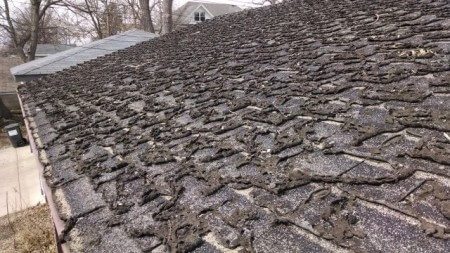 Leaking roofs
Leaking roofs- Defective shingles that could allow for leaks
- Improper roof installations that could allow for / have allowed for shingles to come loose
- Roof coverings at the end of their life
Why do I mention roof coverings at the end of their life as a reasonable negotiation item, but excluded old appliances in my last post? Because appliances can be replaced after they fail. Roof coverings should be replaced before they fail.
Big electrical items.
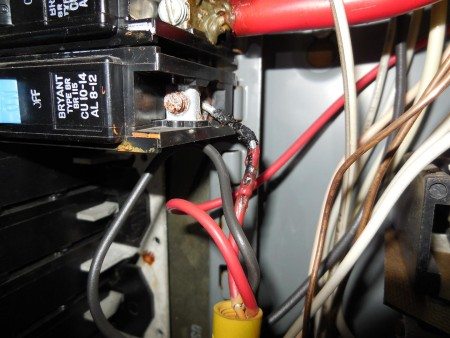 FPE Stab-Lok panels
FPE Stab-Lok panels- Overloaded electrical panels
- Aluminum branch circuit wiring
- Unsafe knob & tube wiring
- Pervasive electrical hazards (open spliced wiring, unprotected wires, improperly wired outets, etc)
- Immediate shock / electrocution hazards, such as exposed, live wires protruding from walls
- New, improper electrical wiring where the extent of the defects is unknown
Big exterior problems.
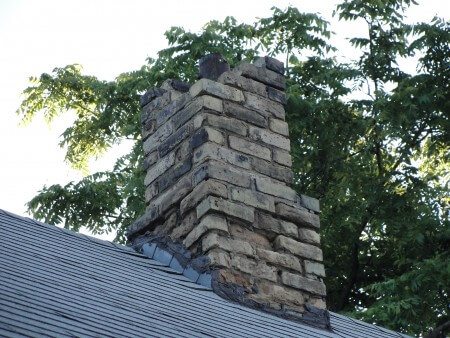 Masonry chimneys in need of more than minor repairs
Masonry chimneys in need of more than minor repairs- Windows in need of replacement
- Rotting / water intrusion at the walls
- Siding in need of major repair / replacement
- Unsafe decks
Big or immediate plumbing items
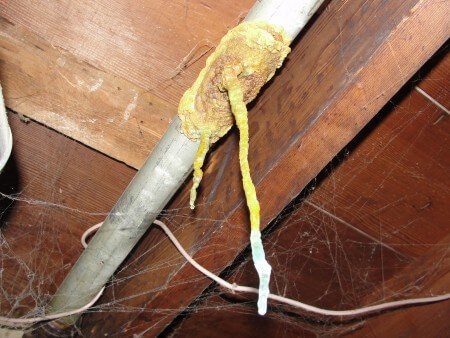 Galvanized water distribution pipes that do not supply adequate water flow
Galvanized water distribution pipes that do not supply adequate water flow- A water supply pipe from the street to the house that may need replacement
- Galvanized steel drains in need of replacement
- Active leaks – water piping, gas piping, drains, vents, etc.
- Clogged drains
Big or immediate HVAC items
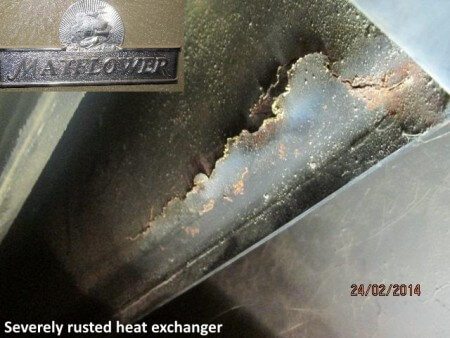 Equipment that is not functional, such as the heating plant, air conditioner, or HRV
Equipment that is not functional, such as the heating plant, air conditioner, or HRV- Unsafe fuel burning appliances, typically due to combustion or venting problems
- A cracked heat exchanger at the furnace
- A boiler that leaks exhaust gas
- A backdrafting water heater
Other things that freak people out
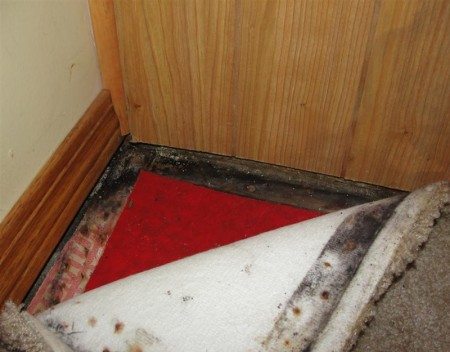 Wet basement issues
Wet basement issues- Moisture or frost in the attic, and / or major ice dam issues. The fix for both of these is to address attic air leaks, insulation, and sometimes attic ventilation. While adding insulation is generally considered an upgrade, if insufficient insulation and attic air leaks are leading to water problems, I’d consider this to be a repair, not an upgrade.
- Foundation problems
- Major structural deficiencies
- Environmental items that are excluded from home inspection standards, such as:
- Buried fuel oil tanks
- High radon
- Loose / friable asbestos
There are many other possible items, but this list makes up most of the ‘big’ items that get identified during home inspections. Did I miss any? Let me know.
Author: Reuben Saltzman, Structure Tech Home Inspections

Laura
February 15, 2016, 1:29 pm
I would add broken/very blocked sewer main to the list.
Reuben Saltzman
February 15, 2016, 2:50 pm
@Laura – great suggestion. I completely agree.
– Reuben
Emely
March 9, 2016, 11:36 pm
What about apparent mold in the attic?
Reuben Saltzman
March 10, 2016, 4:52 am
Hi Emely,
I’d put mold in the attic under the same category as moisture or frost in the attic. Mold is caused by the moisture, and it usually freaks buyers out.